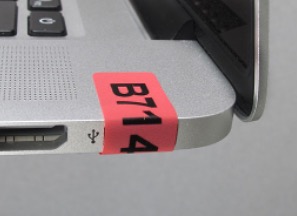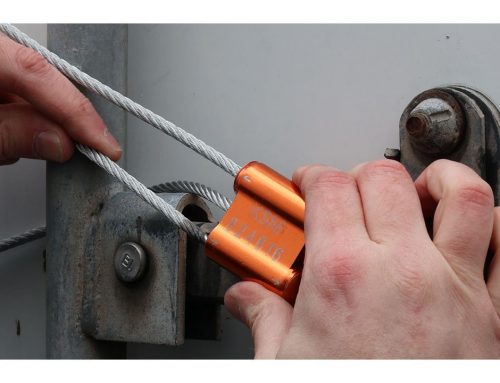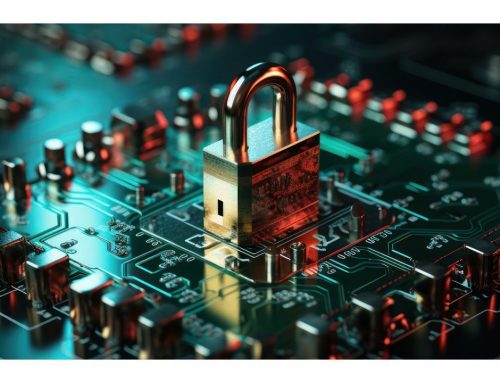The Full Spectrum of Security: Bridging Digital Protocols with Physical Measures
The Full Spectrum of Security: Bridging Digital Protocols with Physical Measures
In today’s rapidly advancing digital age, the landscape of cyber threats is in a constant state of evolution. Every day, new vulnerabilities emerge, and with them, sophisticated methods of exploitation. From ransomware attacks that cripple entire city infrastructures to stealthy data breaches that compromise personal information, the threats are multifaceted and relentless.
However, while much attention is given to digital defenses—firewalls, encryption, and antivirus software—it’s crucial to recognize that cybersecurity isn’t solely a digital concern. A truly comprehensive approach to security must encompass both the digital realm and the tangible, physical world. After all, the most fortified digital system can still be vulnerable if someone can simply access a server room or tamper with equipment.
As a leading security seal manufacturer, we understand this dual necessity intimately. We emphasize a holistic approach to security, considering both digital and physical attack vectors. The synergy of digital and physical security measures isn’t just a recommendation; it’s an imperative for any organization serious about safeguarding its assets and data.
The Role of Physical Security Controls
Physical security implements play a pivotal role in safeguarding assets, ensuring compliance, and acting as the first line of defense against unauthorized access.
Tamper Evident Labels:
At their core, tamper evident labels are designed to show visible signs of meddling or interference. By providing a clear indication of tampering, they not only act as a deterrent to potential intruders but also offer evidence of unauthorized access. In scenarios where the integrity of an asset is paramount, these labels serve as a crucial asset. These labels come in a variety of configurations, which can be customized for a wide range of scenarios.

FIPS Labels:
The Federal Information Processing Standards (FIPS) are a set of standards that describe document processing, encryption algorithms, and other information technology standards for use within nonmilitary government agencies and by government contractors. FIPS labels, in this context, are crucial for entities that need to ensurethey comply with these standards. Beyond mere compliance, these labels also signal a commitment to a higher standard of security, assuring stakeholders of the rigorous protections in place.

Padjack Computer Port Seals:
Unsecure physical access points can compromise the integrity of an otherwise secure system. Padjack seals, which are devices designed to lock or seal ports and access points, play a crucial role in preventing unauthorized physical tampering. By securing routers, servers, computer cases, and network switches, these seals help ensure that computer hardware remains uncompromised.

Asset Tags:
In the vast ecosystem of an organization’s assets, keeping track of every piece of equipment can be a daunting task. Yet, the significance of maintaining an accurate inventory is paramount. Asset tags, which are labels used to track equipment, play a pivotal role in this endeavor.
You can’t protect what you aren’t aware of. By ensuring that every asset is accounted for, organizations can better safeguard against loss, theft, or unauthorized access.
In essence, while the digital realm of cyber security is undoubtedly vital, the physical controls are the bedrock upon which these digital defenses stand. They work hand in hand, ensuring that from every angle, assets remain secure and uncompromised.
The Importance of Tamper Indicators and Security Assessments
Robust cybersecurity entails not only offering digital defenses but also swiftly identifying and responding to compromised access points. This is where tamper indicators and regular security assessments come into play in protecting an organization’s security framework.
Tamper Evidence:
While tamper evident labels are like a canary in the coal mine, they can act as early warning systems, signaling that something might be amiss in a system. These indicative measures allow administrators and security officers to respond quickly. This proactive approach allows organizations to thwart potential threats before they escalate.
Security Assessments:
Complacency is a silent enemy in the realm of cyber security. Even the most robust security protocols can become outdated or vulnerable over time. This is where regular security assessments become invaluable. By systematically evaluating an organization’s security measures, these assessments can pinpoint vulnerabilities, gaps, or areas that need bolstering. It’s a proactive approach, ensuring that defenses evolve in tandem with emerging threats and organizations remain one step ahead of potential attackers.
The Layered Approach to Security: Authentication and Confirmation
Robust cybersecurity requires a multidimensional approach. Just as a castle doesn’t rely on a single wall for its defense, modern security protocols necessitate a multi-layered strategy.
Layered Security:
Threats come in various forms, and a singular line of defense can easily be breached. However, when multiple layers of security are in place, even if one is compromised, others stand firm to prevent a full breach. To ensure security, companies should adopt a multi-faceted approach that includes contingency planning, regular software updates, physical protection of equipment, and vigilant network traffic monitoring. By combining digital and physical controls, organizations can create a robust security framework that addresses threats from every conceivable angle.
Authentication Techniques:
Authentication is the process of verifying the identity of a user, system, or application. It’s the digital equivalent of asking for an ID at a security checkpoint. The role of authentication in ensuring only authorized access is paramount. There are various methods of authentication, from passwords and PINs to biometrics and MFA (multi-factor authentication). Each method has its significance, and the choice often depends on the level of security required. In high-risk scenarios, multiple authentication techniques might be combined to ensure maximum security.
Confirmation through Tracking:
While authentication ensures that the right individuals have access, confirmation through tracking ensures that assets remain where they should be. By tracking serial numbers and other unique identifiers, organizations can monitor the movement and status of their assets. This acts as a secondary check, ensuring that even if someone gains access, any unauthorized movement or changes can be quickly detected and addressed.
Conclusion
The digital age, with all its conveniences, brings forth a myriad of challenges in the realm of security. A comprehensive approach to cyber security—one that melds the digital with the physical, the proactive with the reactive—is not just a luxury; it’s a necessity.
Companies like NovaVision play a pivotal role in this landscape, providing the essential physical security tools that often serve as the first line of defense against threats. Their expertise underscores the importance of not just digital firewalls but also tangible barriers.
In this ever-evolving digital era, the call to action for businesses is clear: Regularly evaluate, innovate, and update security practices. The threats may be relentless, but with a comprehensive, layered approach, we can ensure that our defenses remain even more resolute.


